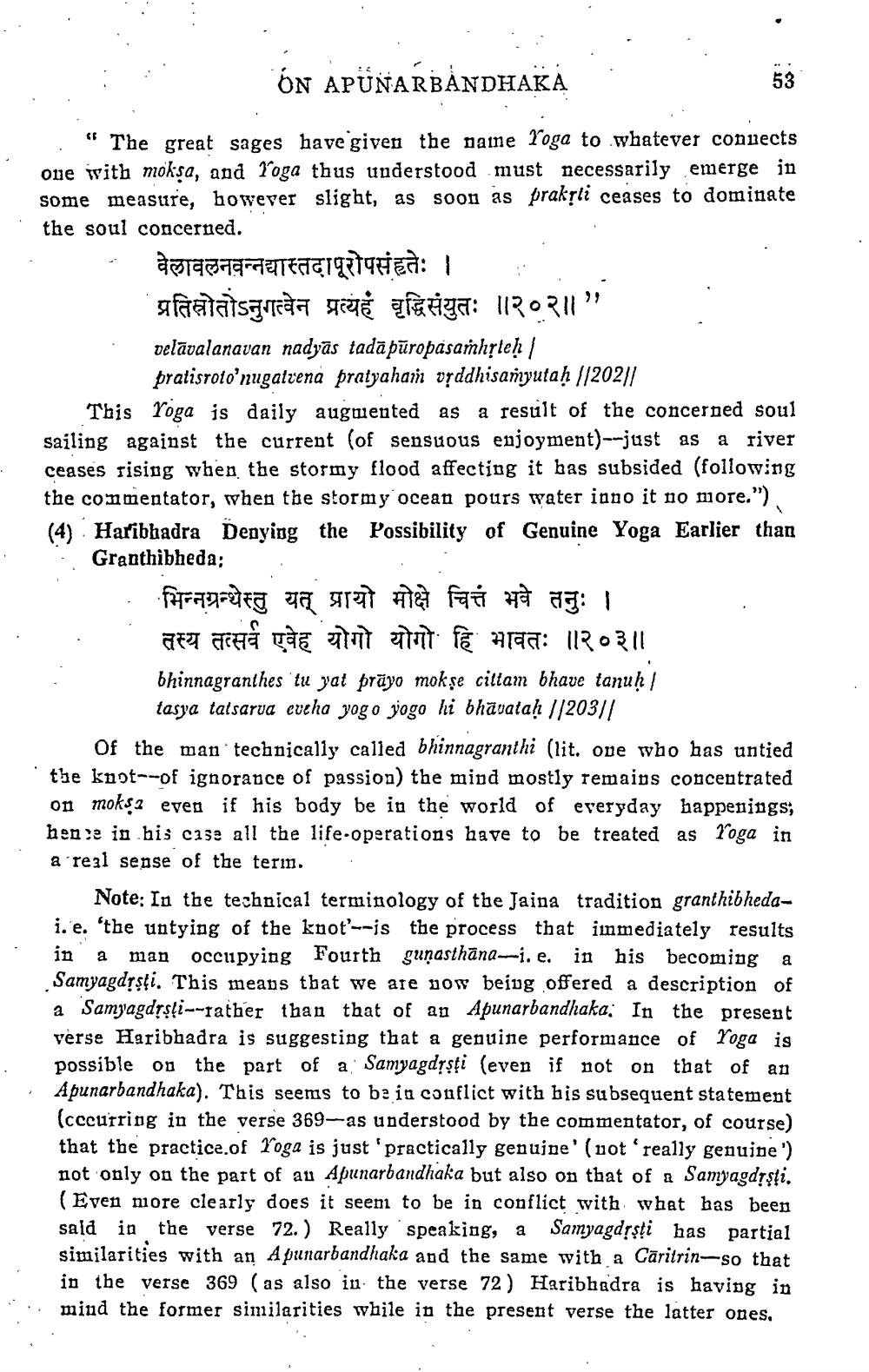________________
ÓN APUNARBÅNDHAKA
52
." The great sages have given the maine Yoga to whatever convects oue with moksa, and loga thus understood must necessarily emerge in some measure, however slight, as soon as praksti ceases to dominate the soul concerned.
वेलावलनवन्नद्यास्तदापूरोपसंहृतेः । प्रतिस्रोतोऽनुगत्वेन प्रत्यहं वृद्धिसंयुतः ॥२०२॥" velāvalanavan nadyās tadā pūropåsamhțle|
pratisroto’nugatvena pratyahai vyddhisamyutaḥ//202|| This Yoga is daily augmented as a result of the concerned soul sailing against the current (of sensuous enjoyment) --just as a river ceases tising when the stormy flood affecting it bas subsided (following the commentator, when the stormy ocean pours water inno it no more."). (4) Haribhadra Denying the Possibility of Genuine Yoga Earlier than Granthibheda;
भिन्नग्रन्थेस्तु यत् प्रायो मोक्षे चित्तं भवे तनुः । तस्य तत्सर्व एवेह योगो योगो हि भावतः ॥२०३॥ bhinnagranthes tu yat prāyo mokṣe cittam bhave tanuḥ |
tasya tatsarua cucha yogo yogo hi bhävatah //20311 Of the man technically called bhinnagranthi (lit. one who has untied the knot--of ignorance of passion) the mind mostly remains concentrated on moks? even if his body be in the world of everyday happenings; hen:e in his case all the life-operations have to be treated as Yoga in a real sense of the term.
Note: In the technical terminology of the Jaina tradition granthibhedai. e. 'the untying of the knot--is the process that iinmediately results in a man occupying Fourth gumasthāna--i.e. in his becoming a Samyagdrsti. This means that we are now being offered a description of a Samyagdrslim-father than that of an Apunarbandhaka, In the present verse Haribhadra is suggesting that a genuine performance of Yoga is
possible on the part of a Samyagdīšți (even if not on that of an . Apunarbandhaka). This seems to be in conflict with his subsequent statement
(cccurring in the verse 369-as understood by the commentator, of course) that the practice.of Yoga is just 'practically genuine' (uot really genuine') not only on the part of au Apunarbandhaka but also on that of a Samyagdīşti. (Even more clearly does it seem to be in conflict with what has been sald in the verse 72.) Really speaking, a Samyagdrsti has partial similarities with an Apunarbandhaka and the same with a Caritrin--so that in the verse 369 (as also in the verse 72) Haribhadra is having in mind the former similarities while in the present verse the latter ones,




